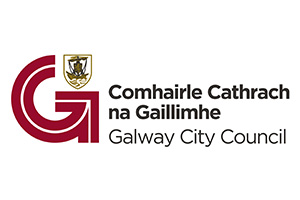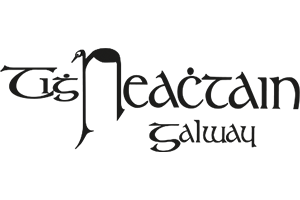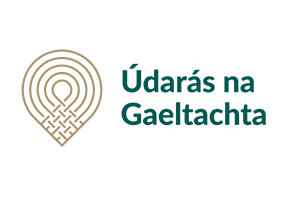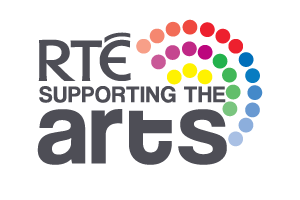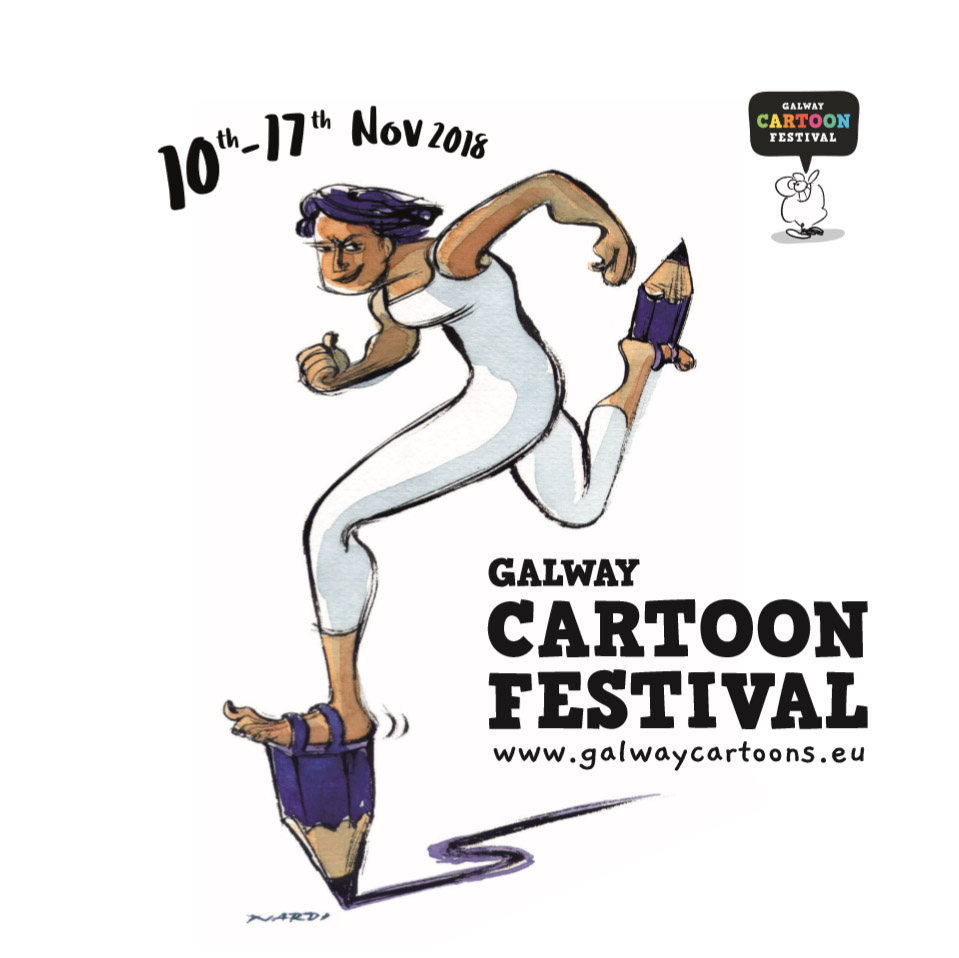
In 2017, Galway had its first international cartoon festival. In 2018 we’re expanding greatly, to bring you a big selection of exhibitions, workshops and many other entertaining cartoon-related events.
This year we focus on 11/11 – one hundred years to the day since the “Great War” of 1914-18 came to an end.
Exhibitions
- “A Peace To End All Peace” – our Armistice Centenary exhibition
- “Cartoons of the World” – an exhibition of contemporary satire with some of the world’s best cartoonists
- Graeme Keyes – A solo show by one of Ireland’s funniest cartoonists
- The 3D Cartoons of Stephen Dee – an exhibition of comic sculptures
- Humor & Vine – a French exhibition of hedonistic wine-themed cartoons, on tour in Galway French restaurants
The Conference
Activities!
- Live Cartoon Art Event by leading Polish artist Maria Apoleika
- Cartoon Workshop for Schools
- The Cartoon Trail
- Caricature Sessions
Look out for more details – or get in touch if you’d like to play a part.
2018 As It Happened
A New Festival Website
August 26, 2018
It’s up at last, the all-singing all-dancing website of the all-drawing festival!
Welcome. This is the place for news and information on the shows and events we’ll be bringing you this November. Drop by regularly (or subscribe, using the form to the left) for updates, cartoonist-related talk, and of course the cartoons themselves, which we’ll be uploading frequently.
Here’s one right now from the redoubtable Mr Tom Mathews, a member of our very committee:
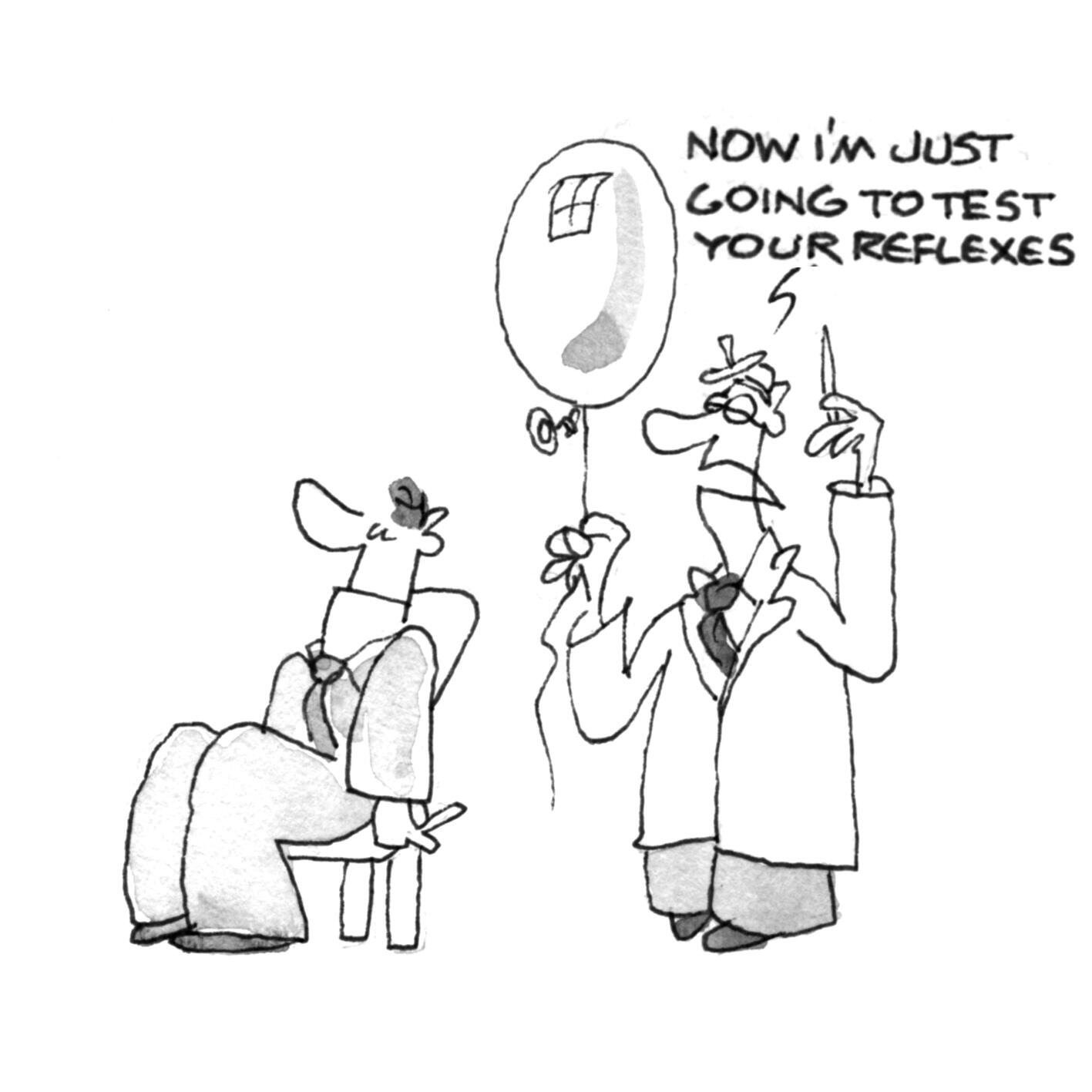
Tom Mathews Cartoons in WW1 – A Conference
August 26, 2018
NUI Galway, November 10
Hardiman Research Building, 4pm – 6pm
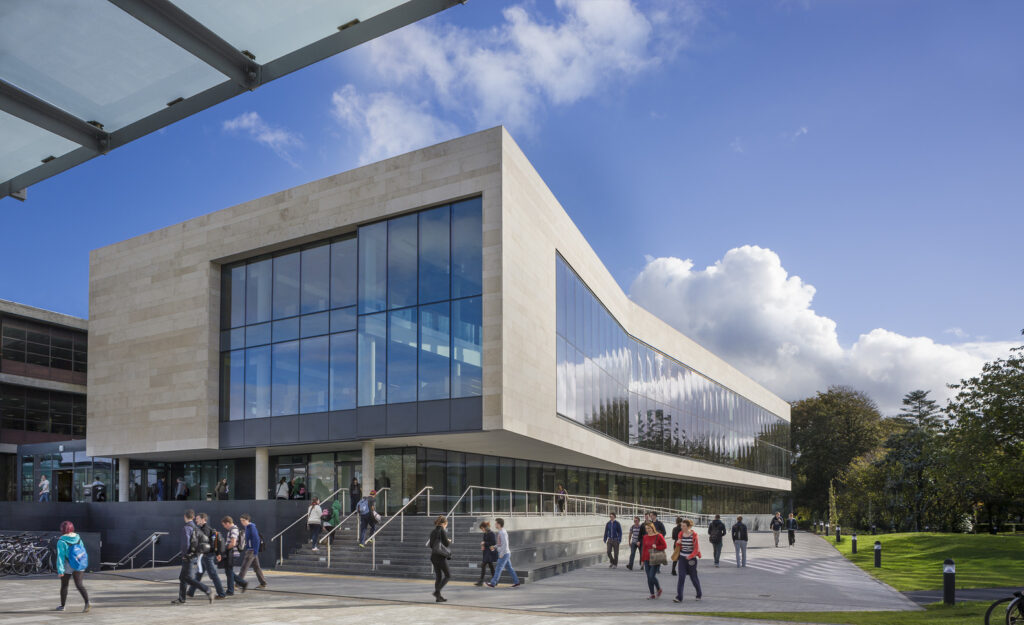
The rather handsome Hardiman Research Building For the centenary of the Armistice, the Galway Cartoon Festival presents a conference and exhibition exploring the impact of cartoons during WW1 in Europe, to be hosted in NUI Galway in collaboration with the French Department and the Embassy of Belgium.
Guests
The conference takes place on Saturday 10th of November in Room G011 of the Hardiman Research Building (near the college library).
Prof. Grace Neville of UCC, recipient of the Légion d’Honneur, will discuss the influence of press cartoons in Ireland after 1916.
Philip Dine of NUI Galway will explore the post-Armistice world order as portrayed in Hergé’s famous Tintin adventures, while colleague Coralline Dupuy will focus on the politics of gender representation in French-speaking cartoons published during the First World War.
French Honorary Consul Catherine Gagneux will give a presentation on the rise, use and influence of cartoons since WW1, using original drawings that will be part of the exhibition.
Renowned Belgian comic author Jean Claude Servais will also speak at the launch. Mr Servais will explain the creative process behind his comics, with an emphasis on the stories set during WW1. This presentation is sponsored by the Belgian Embassy and Wallonie-Bruxelles International.
Click For More Information About The Speakers
Exhibition
The associated exhibition will explore such issues as:
- The evolution of cartoons and comics during WW1.
- The use of cartoon as propaganda.
- Political cartooning in Ireland from 1916 to 1918.
- The reactions of cartoonists to the 1918 Armistice and subsequent peace initiatives in Europe.
As a link and follow up, there will also be a small exhibition on ERASMUS.
Comic Art Workshop
On Thursday 15th of November, NUIG will also invite students from secondary schools in Galway to explore issues through drawing, in an art workshop led by professional cartoon and comic artists.
What Is A Galway Cartoon Festival?
August 27, 2018
What is the Galway Cartoon Festival? Why are we? Who do we? How do you? Very well thank you. Go Here to read the reasons behind the festival, what we plan to do, and what we hope it will achieve.
(I mean, it’s for fun mainly. But you have to have other reasons to make it sound adult.)
Where and when are we? That’s easier to answer. At several major venues around Galway city, November 10th – 17th, 2018. We hope to meet you there. Until then, here’s another cartoon:
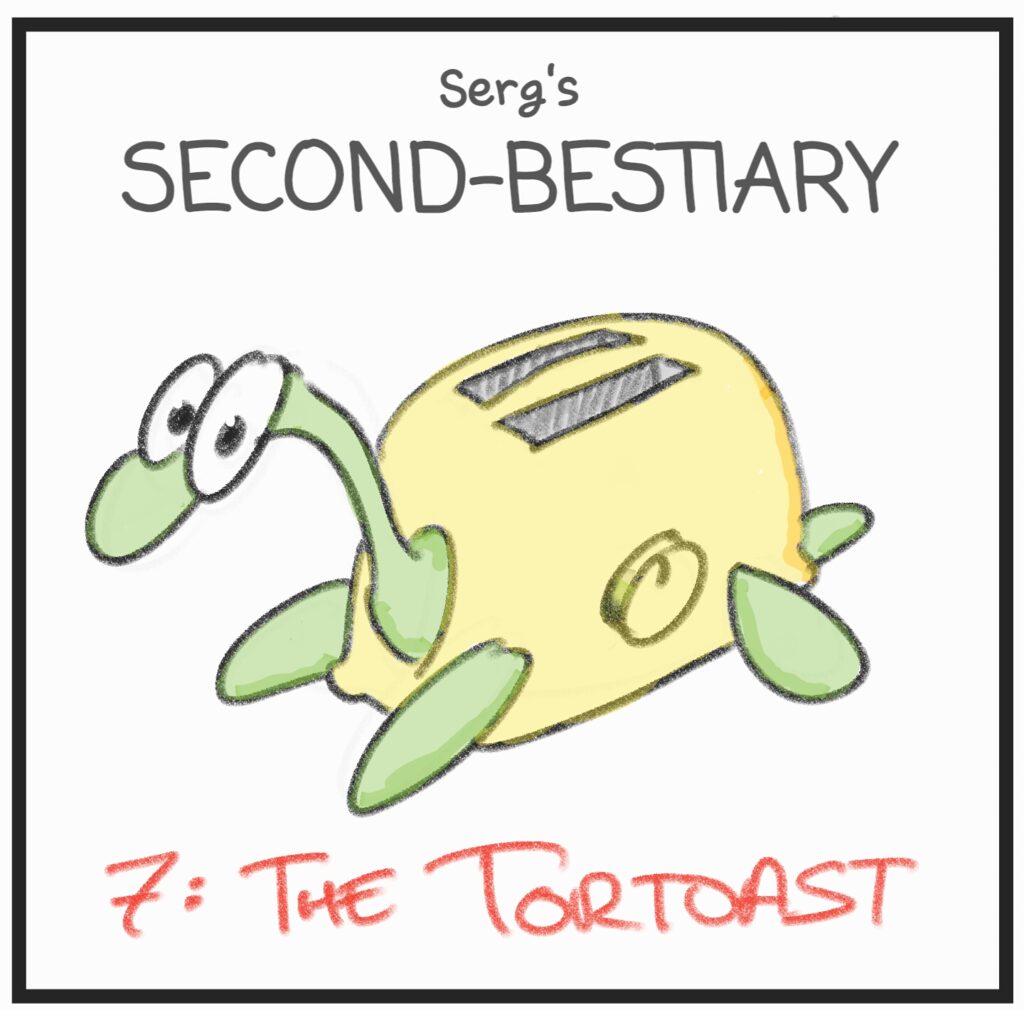
The Armistice Exhibition
August 28, 2018
Black Gate Cultural Centre
6pm – Midnight, except Mondays
In 2017 we held our first international open exhibition of cartoons, under the title “Alternative Facts”. The response was amazing; we needed two venues to display over a hundred works from more than a dozen countries. We could have shown as much again if we’d had the room.
This year we’re organising the festival around November 11th 2018, one hundred years precisely since the end of the “Great War”, and have arranged a number of festival events to reflect on this historic moment. A day of joy for many, but one also of grim resolution, as the world vowed never again to unleash the horrors of industrialised war.
I think we all know how well that worked.
A century of violence and upheaval – much, arguably, as direct consequence of this very peace settlement. From WWII through the Cold War to the War on Terror, the planet has hardly had a quiet moment since.
Which is why we’re calling this year’s open show:
“A Peace To End All Peace”
We’re not looking for submissions about these events exclusively. As always, we’re open to everything – especially everything funny. But we expect that many cartoonists will have things to say about them.
Have a look at our guidelines if you’d like to take part, or contact us with any question. The exhibition is open to submissions from all cartoonists everywhere.
Exhibitors this year include:
Steven Bonello Malta Harry Burton Ireland Virginia Cabras Italy Donal Casey Ireland Allan Cavanagh Ireland Richard Chapman Ireland Ciaraíoch Ireland Gerard Crowley Ireland Florian Doru Crihana Romania Hunt Emerson UK FadiToOn Norway Jonesy UK Eoin Kelleher Ireland Graeme Keyes Ireland Caoimhe Lavelle Ireland Tom Mathews Ireland The Surreal McCoy UK Ed McLachlan UK Marilena Nardi Italy Nick Newman UK Nol France Damir Novak Croatia Martin Rowson UK Cristina Sampaio Portugal Jean-Claude Servais Belgium Gatis Šļūka Latvia Mustafa Tozaki Cyprus Ivailo Tsvetkov Bulgaria Martyn Turner Ireland/UK TwistedDoodles Ireland Nicolas Vadot Belgium So Why ‘A Peace to End all Peace’?
September 28, 2018
The great Hector Breeze had a cartoon in Private Eye back in 1981, set in a World War One trench. A German general in his spiky helmet is surveying no-man’s-land when an excited junior office salutes and says “The corporal here’s got this great idea for a sequel!”
The corporal of course has a side parting in his straight back hair, and a little toothbrush moustache.
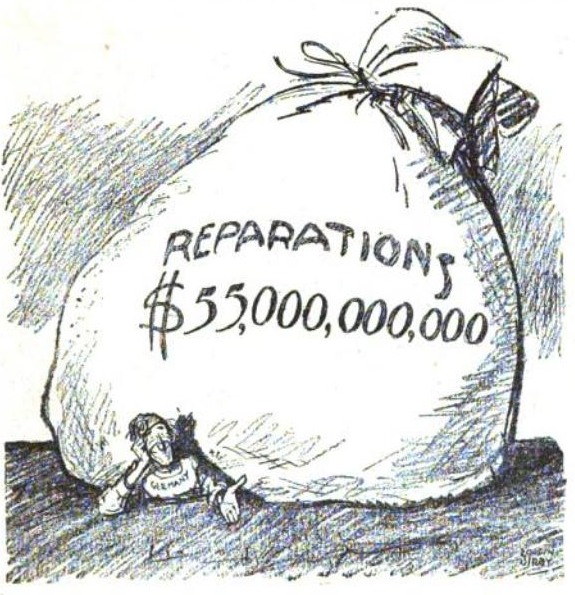
Let’s See You Collect (New York World) Like so many unwanted sequels, WWII was even worse than the original. Which is one reason we don’t remember November 11 1918 with any sense of celebration. (The other being that, slice it as you like, the best you can say is that it’s the day all the murder stopped.) For while never inevitable, the Second was in many ways a direct consequence of the First – and specifically, a consequence of its ending. The Treaty of Versailles, the settlement forced on a defeated Germany, was disastrous.
The victors expected the people of Germany to somehow pay for all the damage done – a huge burden to place on a devastated nation. This alone may not explain the rise of Nazism; if it had not been for a crash on Wall Street – that ever-reliable harbinger of global tragedy – Germany might have met the onerous conditions and still remained a democracy. But that does not make the ‘punishment’ any less unjust. While certainly the Kaiser must bear some blame for going to war, the populace had bugger all part in the decision. They didn’t elect the guy. In fact resistance by ordinary Germans who had begun to see the senselessness of it all brought the war to an earlier end.
Had the pre-war mood in Germany been warlike? Yes – but so had it in Britain and France. All three were imperial powers trying to grab as much of the world as they could. Germany was the relative newcomer but coming up fast; once the slow lane of Europe, it had industrialised and armed itself at an incredible pace. It’s hard now to believe that the other powers weren’t itching for a pretext to knock it back.
The slogan “A War To End All Wars” was never anything but propaganda of course, cynically designed to motivate the young to kill. As David Lloyd George is said to have said, “This war, like the next war, is a war to end war.” But the tag-line stuck, along with its poisonous logic: If we are killing Germans to punish them for war then it must be their fault. By requiring them to pay for it, the Treaty of Versailles turned wartime propaganda into peacetime reality. Maybe it’s simplistic to see that as leading directly to the rise of Hitler, but you can understand how people who’ve been beaten, humiliated and unjustly shamed might be interested to hear the guy who’s saying no, in fact the secret truth is that you’re actually better than everyone else.
Serious errors were made one hundred years ago, which led to a far greater global conflict, which led in turn to a ‘Cold War’ which actually comprised a series of very hot wars fought between global powers in other people’s countries, which in turn gave rise pretty much directly to a ‘War on Terror’ which, when soberly assessed, would seem to mean declaring war on anything that scares you. In short, a solid century of slaughter. And us today, obviously without any idea of what the fuck we are doing. One hundred years in which the human race has got much, much better at making war but still doesn’t seem to have the first clue about making peace.
Oh, and there is one specific detail about this day that has always struck me as unbearably tragic. The Armistice (i.e., ceasefire) was called on the 11th day of the 11th month. To be precise, for the 11th hour of the 11th day of the 11th month. Why? For dramatic effect. For a sense of importance. Maybe because it struck someone as cool, I don’t know.
In those last eleven hours, 2,738 soldiers were killed.
Richard Chapman
Our Conference Speakers
October 8, 2018
The Cartoons in WW1 conference takes place in Room G011 of the Hardiman Research Building (near the college library) on Saturday 10th of November at 4 p.m.
Speakers
Grace Neville
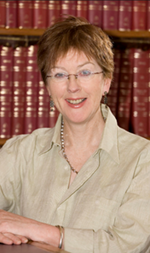
Grace Neville is a graduate of University College Cork, l’Université de Caen and l’Université de Lille. She is Emeritus Professor of French at UCC where she was Vice-President for Teaching and Learning, Head of the Dept of French and elected member of the Governing Body.
She is a member of several boards including the Irish Board of the Legion of Honour, AMOPA (Association des Membres de l’Ordre des Palmes Académiques en Irlande), the Alliance Française de Cork and the Cork-Rennes Twinning Committee. She now spends much of her time in Paris where she is member/chair of numerous boards in the Sorbonne (where she is Chair of the Strategic Orientation Committee), the ANR (Agence Nationale de la Recherche) and the CRI (Centre de Recherche Interdisciplinaire).
Her recent publications include Erin and Iran: Cultural Encounters between the Irish and the Iranians (co-edited with Houchang Chehabi, Ilex Foundation / Harvard University Press, 2015) and studies on Franco-Irish relations especially from the time of the Great Irish Famine of the 1840s onwards. She has been awarded the Légion d’Honneur and the Palmes Académiques.
She will give a presentation on the influence of cartoons in the Irish press after 1916.
Philip Dine

Philip Dine is Head of French at the National University of Ireland Galway. He has published widely on representations of the former French empire, particularly decolonization, in fields ranging from children’s literature to professional sport. Further projects have targeted popular culture and identity-construction in France and the contemporary Francophone world.
His presentation will focus on arguably the best-known figure to emerge from the rich Franco-Belgian tradition of cartoons and comic books, namely Hergé’s roving young reporter Tintin. This cherished character’s first three adventures – in the Soviet Union, the Congo and the United States – will be explored as representations of the new world order that emerged in the wake of the Armistice of 11th November 1918.
Coralline Dupuy
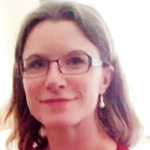
Coralline Dupuy studied French and English literature in Brest before moving to Galway for her postgraduate studies. After obtaining her PhD, she now works in French in NUI Galway and teaches in the areas of young adult literature, fairy tales, and the French language.
Her paper will focus on the politics of representation of gender in the French-language cartoons published during the First World War.
Catherine Gagneux
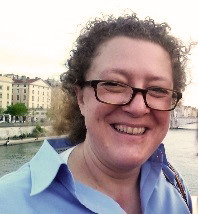
Catherine Gagneux is the French Honorary Consul in Galway Connacht and has been living and working in Ireland for over 20 years as a Senior ERP Business Analyst.
She has been working with the NUI Galway French Department and the organisers of the Galway Cartoon Festival to commemorate the WW1 centenary, by examining how cartoons portrayed events and influenced the ways information was relayed and interpreted.
She will give a presentation on the rise, use and influence of cartoons since WW1, making use of original drawings that will also be part of the exhibition.
Jean-Claude Servais
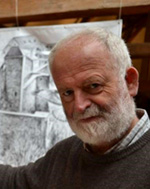
Jean-Claude Servais studied graphic art at the École Supérieure des Arts Saint-Luc in Liège (Belgium) from 1974 until 1976. He began his career in 1975, becoming part of the generation that modernized Belgian comics from the 1970s.
He brings to the reader emotional, and sometimes magical, character-driven stories, set against the wooded landscapes of the Belgian Ardennes and Gaume regions.
Mr Servais will explain the creative process behind his comics, with an emphasis on stories set during WW1. This presentation is sponsored by the Belgian Embassy and Wallonie Bruxelles International.
Programme Launch!
October 25, 2018
At 7:00pm tonight, Thursday October 25th, upstairs in the Dáil Bar on Middle Street, we’ll be launching the 2nd Galway Cartoon Festival’s Programme of Events!

As well as announcing all that will be happening, we’ll be making available our rather fetching brochure. Both your guide to and souvenir of the festival, it contains over 70 cartoons by our exhibitors, as well as their biographical information, a run-down of all the activities, and a map of the venues.
Big thanks here to our print designer Sarah Bruzzi for a fantastic job, and to artist Marilena Nardi for allowing us to use this wonderful image.
Come along!
Polish Country Dances
October 31, 2018
…is a series of drawings by cartoon artist Maria Apoleika. She will create the latest one live in the Cornstore on a large board, so you can come and watch her in action.
No actual dancing is involved – though I suppose you could if the mood takes you.
The Cornstore, Nov 11th, 12-5pm
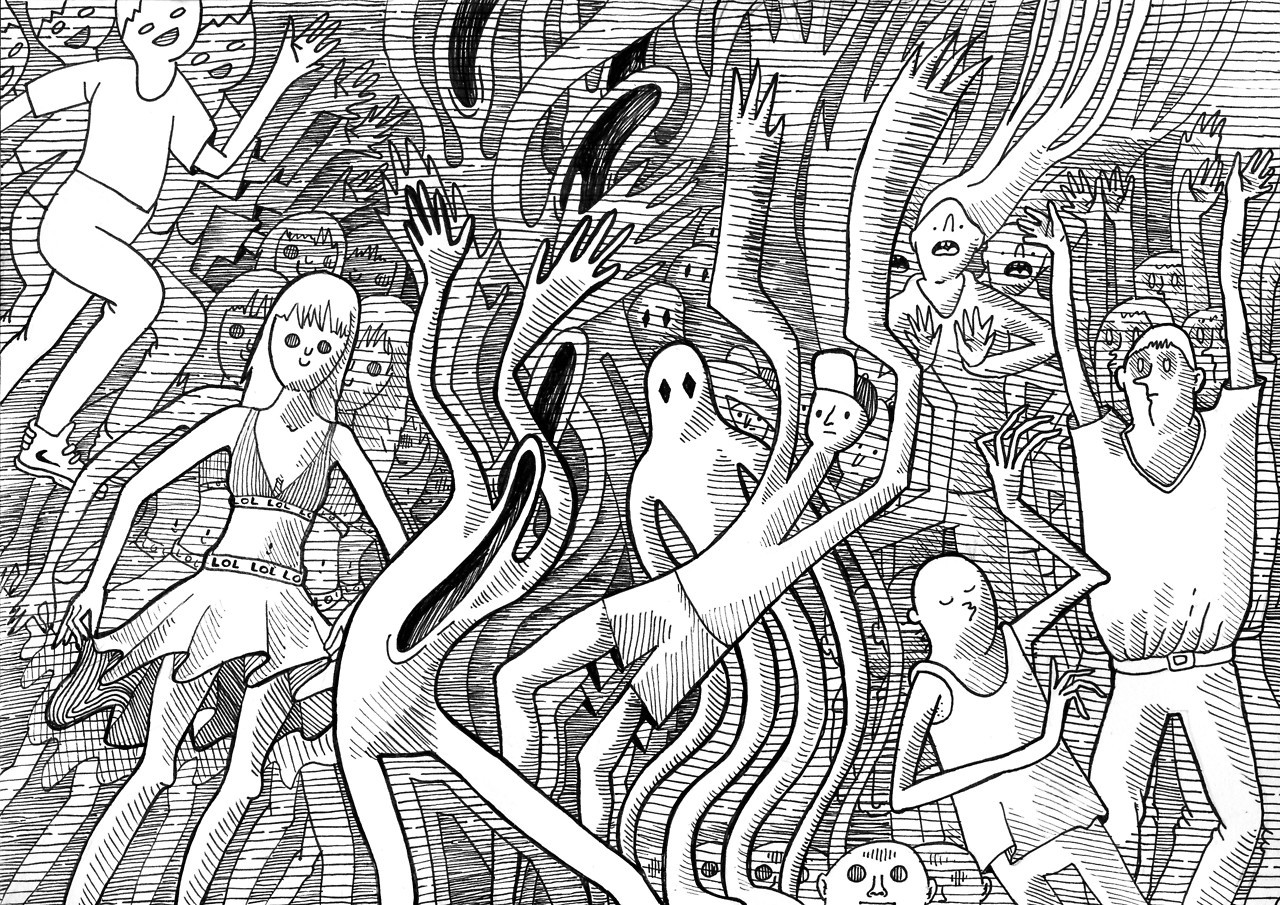
As well as drawing live, Maria will also discuss her work with the audience afterwards – though note that this will take place mainly in Polish.
We will also be exhibiting the rest of Maria’s “Polish Country Dances” as part of our Cartoon Trail, a series of window-display exhibitions that runs between High St, Cross St and Middle St.
Maria Apoleika’s appearance in Galway has been generously sponsored by the Latin Quarter.
Biography
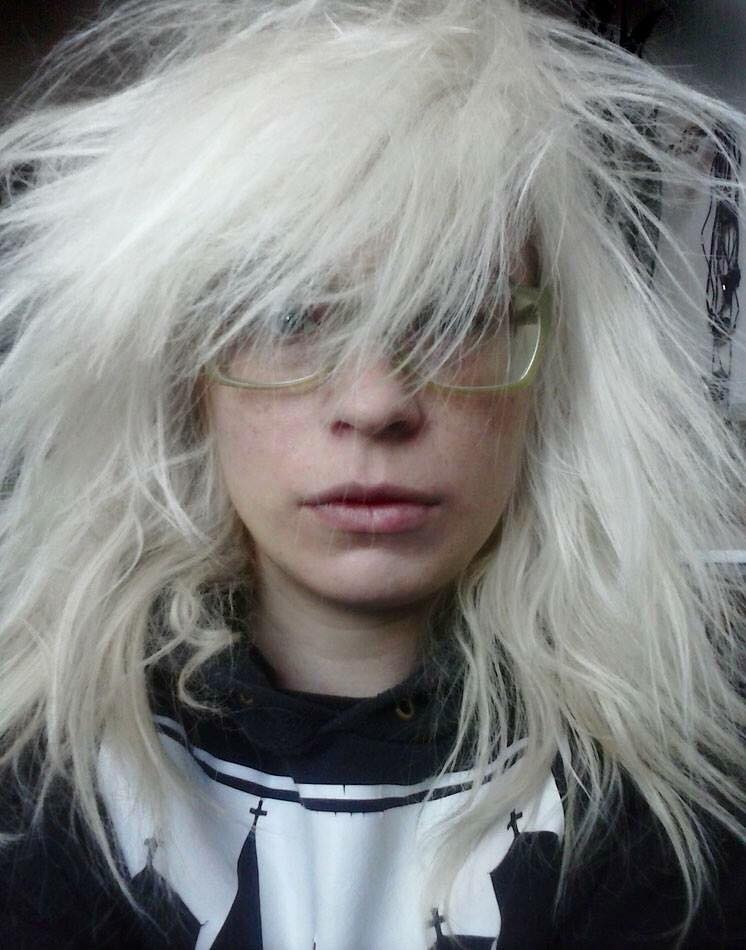
Maria Apoleika, graduate of National Film School in Łódź, runs the most popular cartoon and comic fanpage in Poland – Psie Sucharki (Dog Biscuits). She illustrates books, paints and draws, and so far has several dozen group and individual exhibitions under her belt.
She is interested in spaces beyond official supervision – in recent years she created two series of paintings on deurbanising spaces, and one of drawings about invisible love. Now she will present a series of graphics on Polish Contemporary Folk Dances inspired by illegal techno parties, the Slavic approach to having fun, and how the ludic mixes with modernity.
MariaApoleika, absolwentka Szkoły Filmowej w Łodzi. Prowadzi najpopularniejszy w Polscefanpage rysunkowo-komiksowy – Psie Sucharki. Ilustruje książki, maluje irysuje.
Ma na swoim koncie kilkadziesiąt wystaw, grupowych i indywidualnych. Interesują ją przestrzenie poza oficjalnym nadzorem –
w ostatnmich latach stworzyła dwa cykle obrazów o przestrzeniach deurbanizujących się, serię rysunków o nieewidentnej miłości, a teraz zaprezentuje serię grafik Polskie Współczesne Tańce Ludowe inspirowanych nielegalnymi imprezami techno, słowiańskim podejściu do zabawy i tym, jak to, co ludyczne miesza się ze wspołczesnością.
Oprócz tego uwielbia rośliny i zwierzęta – gdzie mieszka, tam zakłada miejski ogród, opiekuje się adoptowanym psem – pudlem królewskim.
Graeme Keyes! Solo Show
November 7, 2018
Town Hall Theatre
Mon-Sat, 10am – 7.30pm
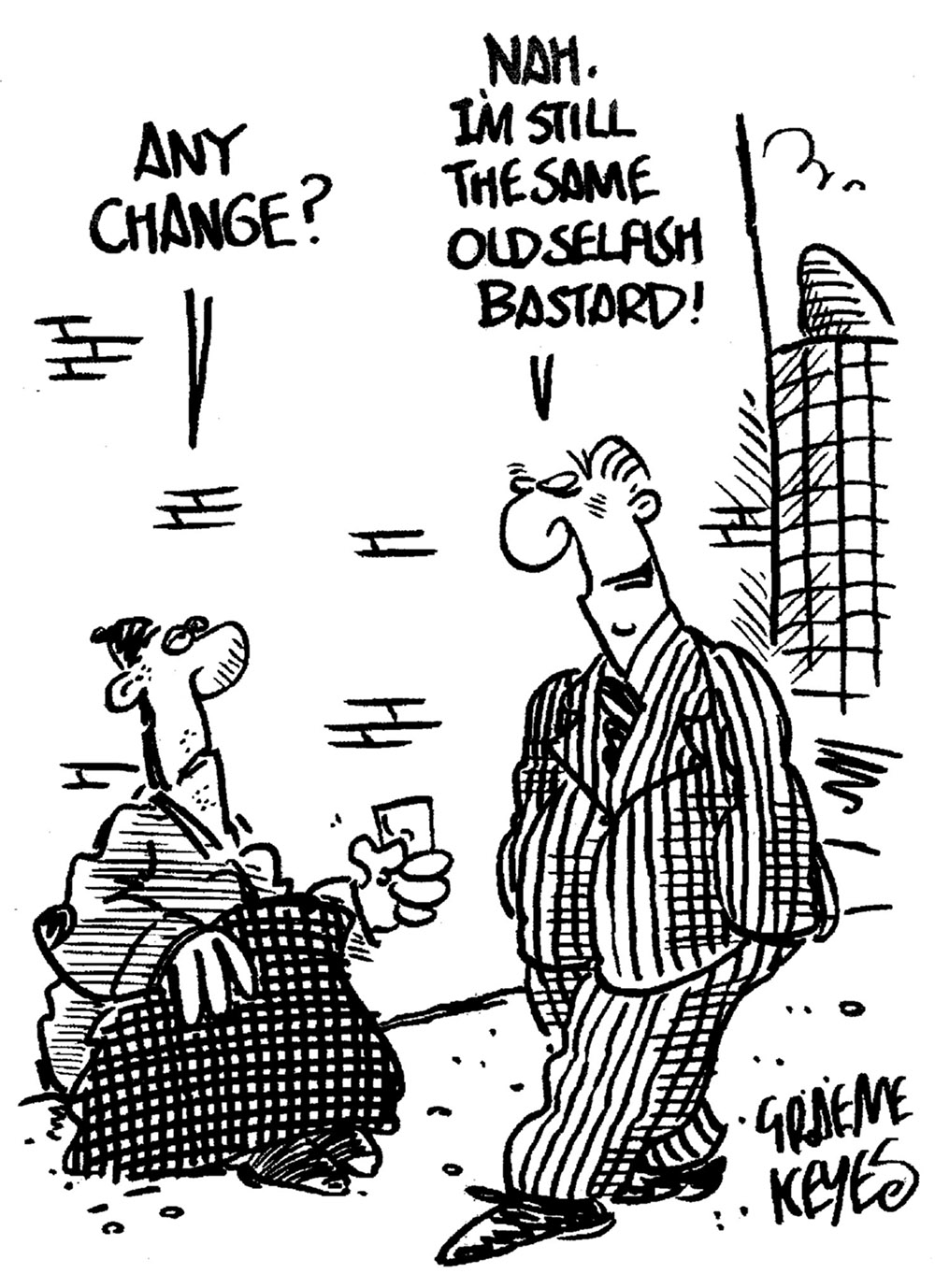
Now it can be revealed!
(Mainly, because it’s already been revealed all over the place.)
The Galway Cartoon Festival’s featured artist for 2018 is the inimitable Graeme Keyes.
Graeme first became part of the Irish public conscience as a contributor to The Phoenix magazine way back in the late ’80s. Since then he’s risen to be probably the most prolific cartoon artist in the country, not just as the Phoenix’s most recognised gag-meister or as the editorial cartoonist for the Irish Daily Mail, but also as a frequent contributor to the UK’s Private Eye.
Graeme will be showing 25 pieces that capture highlights of his career in the lobby of Galway’s Town Hall Theatre. All works are originals, and all are on sale; call Margaret at 086 875 8341 if you see anything you’d like.
Open every day except Sunday, (and even Sundays when there’s a show on in the theatre) from 10:30, though we can recommend going along at about ten past seven in the evening as that’s when the theatre bar opens.
Cartoons of The World
November 15, 2018
Town Hall Theatre
Mon-Sat, 10am – 7.30pm
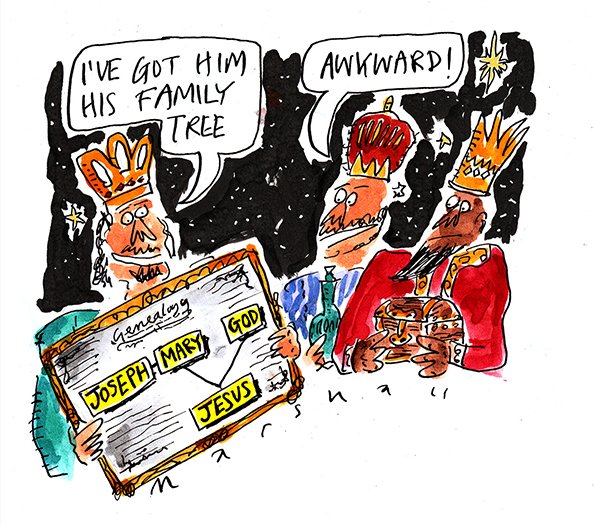
Glenn Marshall Colombia and Croatia, Kenya and Kyrgyzstan, and many countries that don’t start with a ‘kuh’. We’ve received entries to the cartoon festival from all around the planet, and we have put as many of them as we could fit into the Town Hall Theatre gallery.
Unlike our Armistice Exhibition in the Black Gate Cultural Centre, this exhibition has no theme – it’s just whatever we thought was funny or pointed and relevant. So there are more gag cartoons in this one, from the likes of – of course – Tom Mathews, as well as some of the most famous UK cartoonists like Ed McLachlan, Nick Newman, Jonesy, Banx and Martin Rowson, whom you will have seen in UK newspapers or magazines like Private Eye.
There are also many, many lovely works by international stars of cartooning like our special guest Marilena Nardi, Liza Donnelly of the New Yorker, Cristina Sampaio of Portugal and Gatis Sluka of Latvia, as well as serious talents who probably won’t have been seen in Ireland before such as Victor Ndula and Til Mette.
Then there are just about all the famous Irish political cartoonists including Jim Cogan, Martyn Turner, Tom Halliday, Aongus “Scratch” Collins and Gerard Crowley (not to mention the solo show by Graeme Keyes which takes place in the same venue), some fantastic newer Irish talents like TwistedDoodles and Ciaraíoch, and a fine showing by local artists including Annie West, Jessica Lawrence, Jim Ward and of course Allan Cavanagh.
As with our other exhibitions, there are many prints, signed prints and even originals on sale. Call Margaret at 086 875 8341 if you see anything you’d like.
Open every day except Sunday, (and even Sundays when there’s a show on in the theatre). We recommend going along at about ten past seven in the evening, as that’s when the bar opens…
Follow the Cartoon Trail
November 15, 2018
The Latin Quarter
Quay St – Cross St – Middle St
We have so much art, it’s spilled out onto the streets! The windows of establishments along the streets of Galway’s Latin Quarter are festooned – yes, festooned – with cartoon works.
See Stephen Dee’s fabulous 3D miniatures in the windows of Neachtain’s and Charlie Byrne’s.
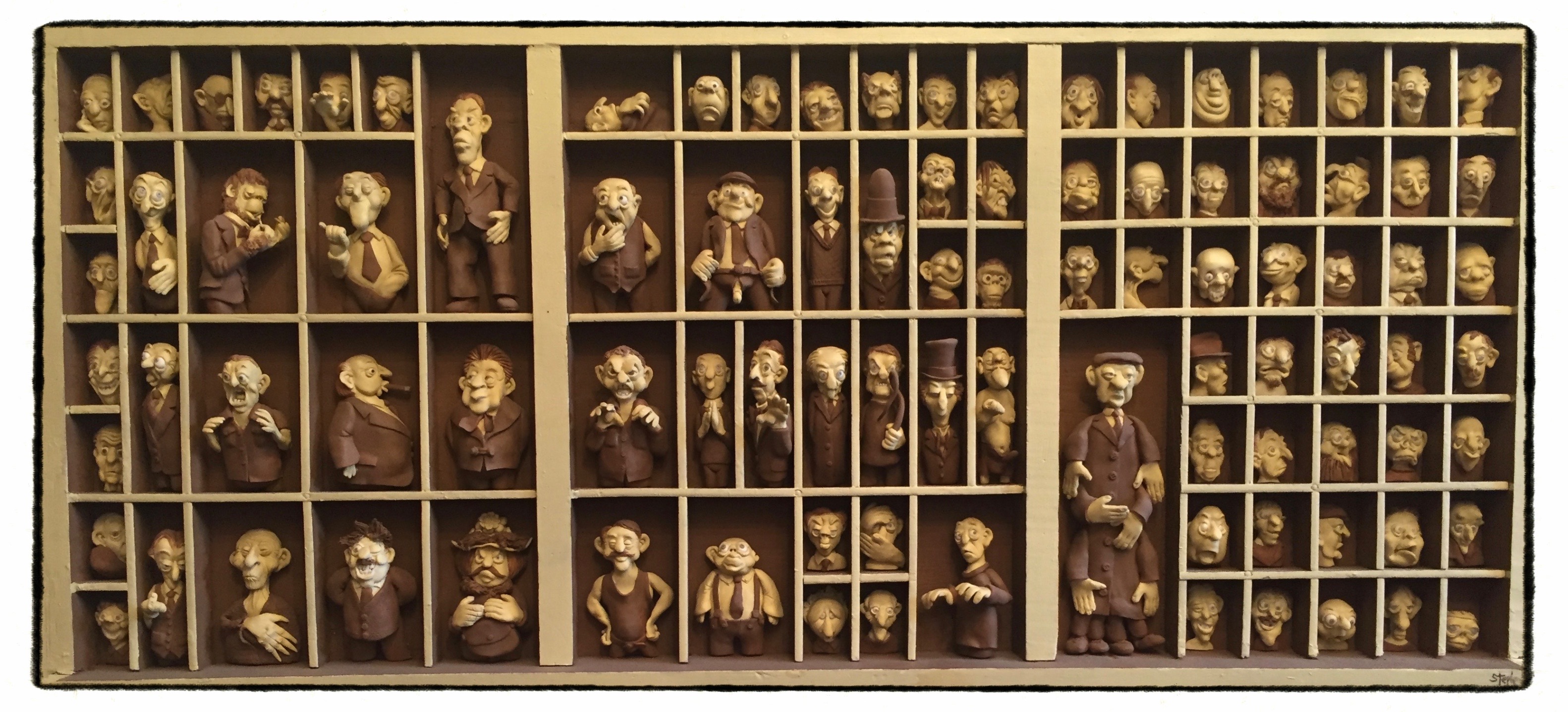
“Do Not Trust These Men” by Stephen Dee See Clyde Delaney’s enormous caricature of Irish literary greats on Cross St.
Visit the Cornstore to see not only the fantastic three-sided hand-drawn comic work of Maria Apoleika, but six gigantic posters featuring nearly fifty great cartoons that we couldn’t find room for anywhere else.
As with our other exhibitions, most works are for sale. Call Margaret at 086 875 8341 if you see anything you’d like.
Last Chance To See Exhibition
December 2, 2018
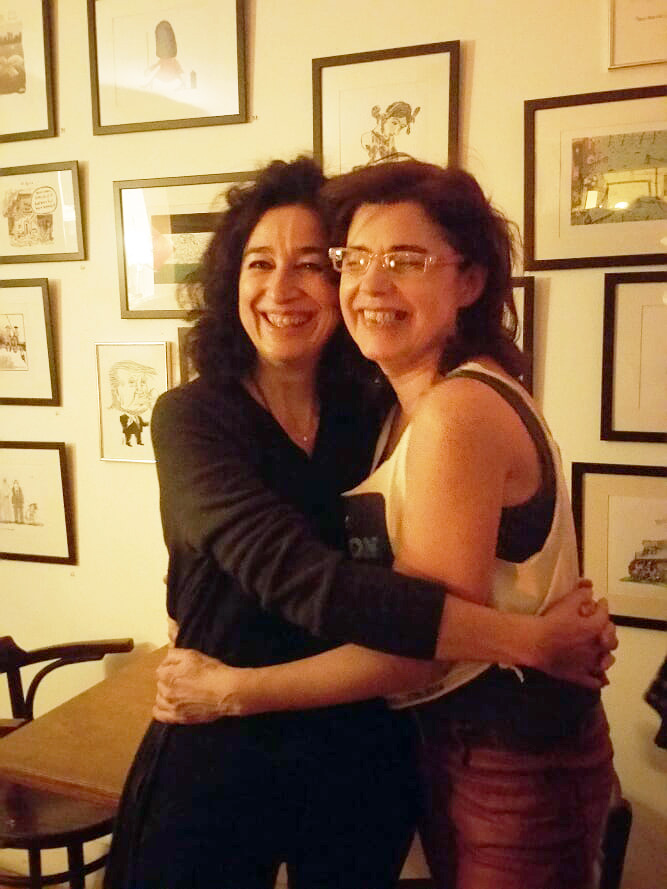
Guest of Honour Marilena Nardi with curator Margaret Nolan Sadly our exhibition for the centenary of 1918 must close in a few days. Featuring work by some of the best cartoonists from around the world and beautifully hung by Margaret Nolan, A Peace To End All Peace is an unusual and thought-provoking display of art.
The show is open in the Black Gate Cultural Centre on Frances St from 6 pm to midnight, and is best appreciated with a nice glass of wine.
I’ll be there on Wednesday evening, if anyone would like to be told some of the stories behind various works.
Here’s a complete catalogue of the works, many of which are still available to buy.
ARTIST COUNTRY MEDIUM PRICE 1 Nicolas Vadot Belgium Print €75 2 Martin Rowson UK Print €75 3 Hunt Emerson UK Print €75 4 Allan Cavanagh Ireland Original €150 5 Fadi Abou Hassan Palestine Print €50 6 Ivailo Tsvetkov Bulgaria Print €50 7 Jean-Claude Servais Belgium Print NFS 8 Jean-Claude Servais Belgium Print NFS 9 Jean-Claude Servais Belgium Print NFS 10 Huseyin Cakmak Cyprus Print €50 11 Vladislav Shirokov Russia Print €50 12 Dean Patterson Ireland Signed Print €125 13 Jonesy UK Signed Print €125 14 Russel Herneman UK Original €50 15 Teja Fischer Germany Print €50 16 Nick Newman UK Original €50 17 Gatis Sluka Latvia Print €50 18 Jeremy Banx UK Original €100 19 Florian Doru Crihana Romania Original Painting €200 20 Marilena Nardi Italy Print €50 21 The Surreal McCoy UK Print €50 22 Crișan and Petry Romania Print €50 23 Jean-Claude Servais Belgium Print €50 24 Cristina Sampaio Portugal Print €50 25 Vasiliy Alexandrov Russia Print €50 26 Crișan and Petry Romania Print €50 27 Damir Novak Croatia Print €50 28 Alexey Kivokurtseva Russia Print €50 29 The Surreal McCoy UK Signed Print €125 30 Sergei Belozerov Russia Print €50 31 Gatis Sluka Latvia Print €50 32 Nani Columbia / Spain Print €50 33 Jia Ruijun China Print €50 34 Marilena Nardi Italy Print €50 35 Miriam Wurster Germany Print €50 36 Scratch Ireland Print €50 37 Fadi Abou Hassan Palestine Print €50 38 Florin Balaban Luxembourg Print €50 39 Virginia Cabras Italy Print €50 40 Miriam Wurster Germany Print €50 41 Martyn Turner UK / Ireland / France Print €50 42 Til Mette Germany Print €50 43 Liza Donnelly USA Print €50 44 Marilena Nardi Italy Print €50 45 Jeremy Banx UK Original €100 46 Cristina Sampaio Portugal Print €50 47 Fadi Abou Hassan Palestine Print €50 48 The Surreal McCoy UK Print €50 49 The Surreal McCoy UK Signed Print €125 50 Karol Čizmazia Cyprus Print €50 51 Igor Smirnov Russia Print €50 52 Nani Columbia / Spain Print €50 53 Igor Pashchenko Russia Print €50 54 Ivailo Tsvetkov Bulgaria Print €50 55 Florin Balaban Luxembourg Print €50 56 Martin Rowson UK Print €50 57 Donal Casey Ireland Print €50 58 Igor Smirnov Russia Print €50 59 Teja Fischer Germany Print €50 60 Liza Donnelly USA Print €50 61 Steve Bonello Malta Print €50 62 Jeremy Banx UK Print €50 63 Jeremy Banx UK Print €50 64 Jia Ruijun China Print €50 65 Santiago Cornejo Argentina Print €50 66 Mustafa Tozaki Cyprus Print €50 67 Ivailo Tsvetkov Bulgaria Print €50 68 Grigori and Ilya Katz Kirgyzstan / Israel Print €50 69 Donal Casey Ireland Print €50 70 Glenn Marshall UK Signed Print €125


